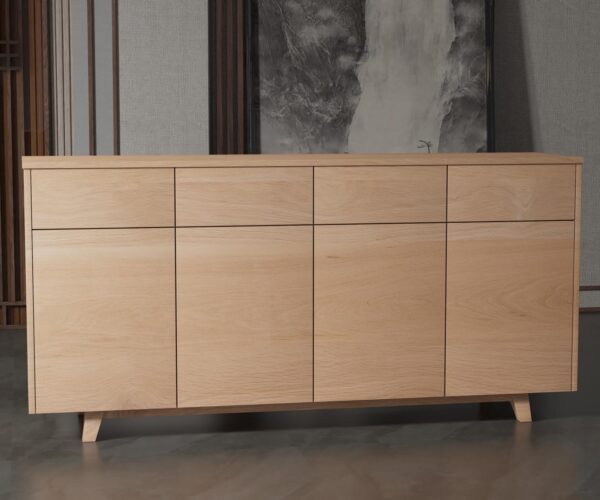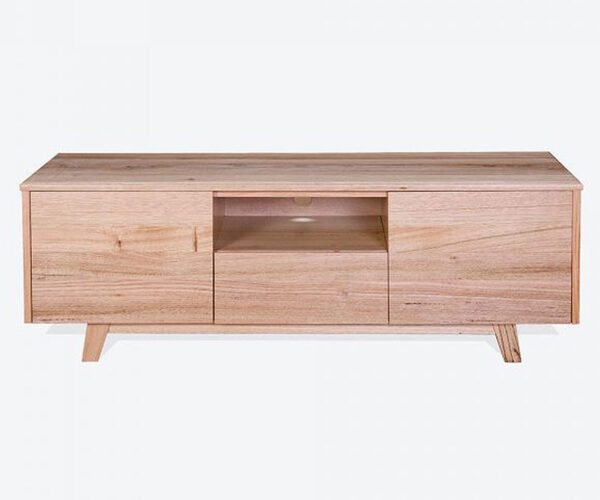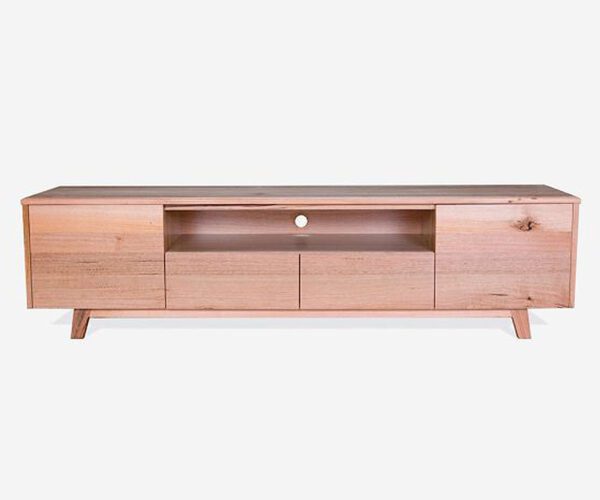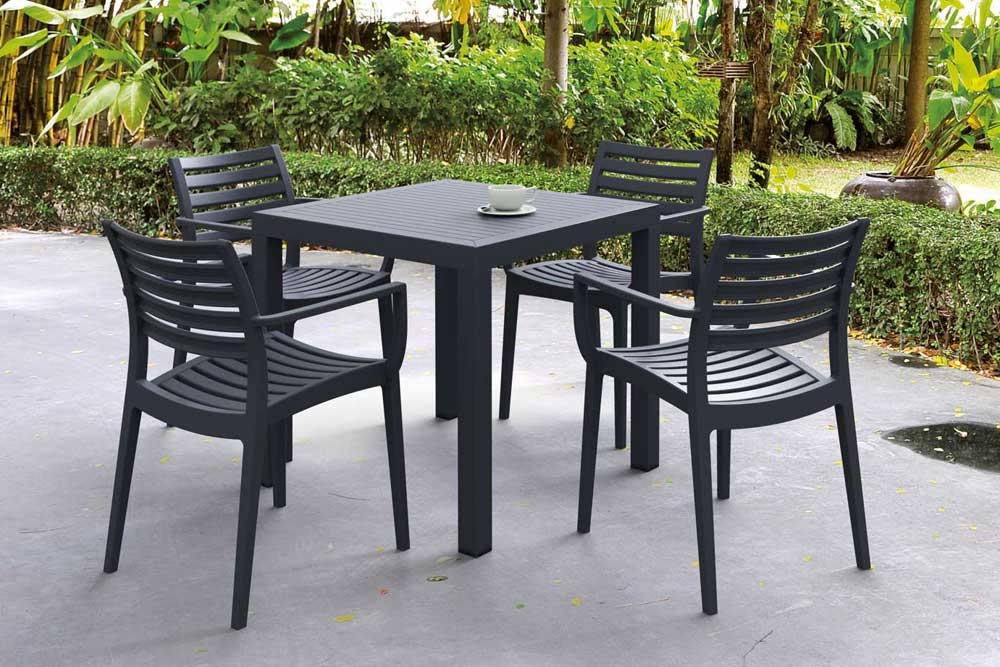7 Silent Safety Hazards in Aged Care Furniture You May Not Have Considered

When it comes to aged care, the primary focus is on delivering high-quality, person-centred care. However, the role of furniture in ensuring a safe environment is often overlooked. The Aged Care Quality Standards, established by the Australian Government Aged Care Quality and Safety Commission, emphasize the importance of delivering care that is not only high quality but also safe and tailored to the needs and preferences of residents. As aged care providers strive to meet these standards, attention must also be paid to seemingly minor details — such as the furniture in use — that can have significant safety implications.
Here are seven silent safety hazards in aged care furniture you may not have considered:
1. Unstable Furniture with a High Tip-Over Risk
Furniture like dressers, bedside tables, and lightweight chairs can pose a tip-over risk, especially for residents who rely on them for support. Without proper stabilisation or anchoring, these pieces of furniture can become hazardous.
Practical Tips:
- Secure Furniture to Walls
Use wall anchors or brackets to fix tall furniture like wardrobes, bookcases, and dressers to the wall. This prevents them from tipping over when residents lean on them or use them for support. - Choose Low-Centre-of-Gravity Designs
Opt for furniture with a low centre of gravity, such as wider bases or heavier bottom sections. These designs are more stable and less likely to tip over, even if leaned on. - Avoid Placing Heavy Objects on Top
Refrain from storing heavy items on the top of tall furniture, as they can cause the piece to become top-heavy and more prone to tipping over. Keep heavier items in lower drawers or shelves. - Use Anti-Slip Pads or Grip Mats
Place anti-slip pads or grip mats under furniture legs, especially for lighter pieces that are more prone to sliding or tipping. This helps stabilise the furniture and reduces movement on smooth surfaces. - Opt for Furniture with Built-In Safety Features
Choose furniture specifically designed for aged care environments, which often includes built-in anti-tip mechanisms or stabilisers. These pieces are engineered to meet the unique safety needs of residents in care settings.
2. Sharp Corners and Edges
It’s easy to overlook the corners and edges of furniture, but these can cause serious injuries for residents with impaired mobility or vision. Even seemingly harmless furniture pieces can become dangerous if they are not designed with safety in mind.
Practical Tips:
- Use Corner Protectors
Install soft, transparent corner guards on furniture with sharp edges to reduce the risk of injuries. These are especially useful for tables and bedside units in high-traffic areas. - Opt for Rounded Furniture Designs
When purchasing new furniture, choose pieces with rounded or curved edges. This reduces the likelihood of residents accidentally injuring themselves when navigating around the room. - Ensure Adequate Spacing
Position furniture with enough space between pieces to allow easy passage for residents using walkers, wheelchairs, or mobility aids. This reduces the chance of accidental contact with sharp edges. - Add Padding to Edges
For existing furniture, consider adding padded covers to the edges of desks, tables, and other sharp surfaces. These can be customised to blend with the décor, offering both safety and aesthetic appeal. - Conduct Regular Safety Inspections
Implement regular checks of all furniture, especially older pieces, to identify and address any sharp or deteriorating edges. Furniture should be replaced or repaired promptly if it poses a safety risk.
3. Low Seating Heights
Chairs and sofas with seats that are too low to the ground can make it difficult for older residents to sit down or stand up. This increases the risk of falls and can lead to injuries when residents try to manoeuvre on their own without adequate support.
Practical Tips:
- Choose Chairs with Adjustable Heights
Opt for seating that allows height adjustments to accommodate residents with different mobility levels. Adjustable chairs can be raised or lowered as needed, providing better accessibility and reducing the risk of falls. - Prioritise Armrests for Leverage
Select chairs and sofas with sturdy armrests to give residents extra support when sitting down or standing up. Armrests provide leverage, making it easier for residents to transition without straining their bodies. - Test Seat Heights with Residents
Before purchasing new furniture, involve residents in the selection process by testing seat heights to ensure they are comfortable and easy to use. This helps tailor furniture to their specific needs. - Use Seat Cushions or Risers
If replacing furniture isn’t immediately feasible, consider using seat cushions or risers to temporarily increase the height of existing low seating. This is a cost-effective solution that can be implemented quickly. - Place Seating in Easy-to-Navigate Areas
Position chairs in accessible areas with plenty of room around them to allow easy movement for residents using mobility aids. This reduces the likelihood of tripping or struggling to get in and out of chairs.
4. Hard-to-Clean Upholstery
Infection control is a critical part of ensuring safe and high-quality care in aged care facilities. Furniture with hard-to-clean fabrics or complex designs can harbour bacteria, leading to health risks for residents and staff.
Practical Tips:
- Choose Stain-Resistant Fabrics
Opt for upholstery materials specifically designed to resist stains, such as treated polyester or olefin. These fabrics are less porous and repel liquids, making them easier to clean. - Look for Antimicrobial Properties
Select upholstery that has built-in antimicrobial treatments. These fabrics help prevent the growth of bacteria and fungi, which is essential for maintaining a hygienic environment in aged care facilities. - Test for Cleanability
Before making a final decision, conduct a cleanability test on fabric samples. Use common cleaning solutions to check how well the fabric responds to stains and spills. This can give you a clear idea of how easy or difficult it will be to maintain over time. - Regular Maintenance Schedule
Implement a routine cleaning schedule to keep upholstery looking fresh and to prevent dirt build-up. Regular vacuuming and spot cleaning can help maintain the fabric’s integrity and appearance.
- Use Protective Covers
Consider using removable, washable covers on frequently used furniture. This additional layer can protect the underlying upholstery from spills and stains, making cleaning easier. Choose covers that are compatible with the furniture’s style and are also easy to remove and wash.
5. Inadequate Weight Capacity
Many standard furniture pieces are not designed to support the weight of all residents. Chairs, beds, or mobility aids with insufficient weight capacities can break under pressure, leading to injury or even lawsuits.
Practical Tips:
- Conduct Regular Assessments of Resident Needs
Periodically assess the weight and mobility needs of residents to ensure that the furniture in use meets their requirements. Keep an updated record of residents’ needs, especially for those who may gain or lose weight or require additional support. This will help in selecting furniture that accommodates all residents safely. - Invest in Heavy-Duty Furniture
Opt for furniture specifically designed for aged care settings that has a higher weight capacity. Look for chairs, beds, and tables rated for at least 200 kg (440 lbs) to ensure they can support a variety of residents. Brands that specialise in healthcare furniture often provide options that exceed standard weight capacities. - Review Manufacturer Specifications
Always check the manufacturer’s specifications and guidelines for weight limits when procuring new furniture. Ensure that the furniture is certified for use in aged care facilities and aligns with safety standards. Request documentation that verifies the weight capacity before finalising purchases. - Implement Training for Staff
Train staff on the importance of understanding furniture weight capacities and how to communicate this information to residents. Encourage them to assist residents in choosing appropriate seating or sleeping options based on individual needs and ensure they know to avoid using furniture that is not suitable for higher weights. - Encourage Feedback from Residents
Create a system for residents to provide feedback about the furniture’s comfort and suitability, including any concerns about weight capacity. Regularly engage residents in discussions about their experiences with the furniture, allowing for timely adjustments or replacements to be made based on their input. This can enhance their comfort and safety.
6. Furniture Without Locking Mechanisms
Wheeled furniture, like mobile chairs or over-bed tables, is common in aged care facilities, but without proper locking mechanisms, these items can easily roll away. This can lead to accidents, especially when residents attempt to use them for support.
Practical Tips:
- Choose Furniture with Built-In Safety Features
Opt for furniture that includes integrated safety features, such as locking mechanisms on wheeled items like chairs and tables. Look for models designed specifically for aged care, as they often incorporate safety innovations that cater to residents’ needs. - Regular Safety Checks
Implement a routine maintenance schedule for all movable furniture. Designate staff to conduct regular checks to ensure that locking mechanisms are functioning correctly. This proactive approach can help identify any wear and tear that may compromise safety. - Staff Training on Use
Train staff on the proper use of wheeled furniture, emphasising the importance of locking wheels when the furniture is stationary. Include this training in onboarding processes and conduct regular refresher courses to keep safety top of mind. - Use Non-Slip Mats
Place non-slip mats or adhesive grips under furniture to help keep it stable when in use. These solutions can provide extra friction, reducing the likelihood of movement and enhancing safety for residents who rely on the furniture for support. - Establish Clear Guidelines
Create clear guidelines for furniture use within the facility. Communicate these rules to both staff and residents, highlighting the importance of ensuring that furniture is locked in place before residents sit or use it for support. Signage can also serve as a helpful reminder in common areas.
7. Non-Slip Surfaces
Furniture surfaces that are too smooth can increase the risk of items sliding off, creating potential tripping hazards. For residents with reduced dexterity or vision, non-slip surfaces on furniture are essential to prevent spills or falls.
Practical Tip:
- Use Non-Slip Mats or Pads
Place non-slip mats or pads under tablecloths, serving trays, or decorative items to prevent sliding. These can be particularly useful in dining areas to keep plates and glasses stable. - Choose Textured Surfaces
Select furniture with textured finishes on surfaces, such as tables and countertops. Textured materials naturally increase friction, reducing the likelihood of items slipping off. - Implement Non-Slip Coatings
Consider applying non-slip coatings or sprays designed for furniture surfaces. These coatings can provide an added layer of grip, especially on frequently used items like bedside tables and dining tables. - Use Anti-Slip Strips
For furniture like chairs and tables that may need additional stability, consider adding anti-slip strips or grips to the feet or bases. This will help prevent movement on smooth floors, enhancing overall safety. - Regular Maintenance Checks
Conduct regular maintenance checks on furniture surfaces to ensure that non-slip features are intact and effective. Replace any worn-out mats or coatings and ensure that textured surfaces are kept clean and functional.
Aligning Furniture Safety with the Aged Care Quality Standards
The Aged Care Quality Standards require providers to deliver care that is safe and of high quality, tailored to meet residents’ needs and preferences. Furniture plays a critical role in this, ensuring that the care environment supports not only comfort but also safety. By proactively addressing these silent safety hazards, aged care providers can meet their regulatory obligations and create a safer, more supportive environment for residents.
For each standard, it’s essential to understand, deliver, monitor, and review the care environment—including furniture—regularly to ensure ongoing safety compliance. These considerations must be integrated into everyday practices to create a safer living space that reduces accidents and supports residents’ well-being.
Conclusion
While furniture may seem like a minor consideration, the hidden hazards it presents can significantly impact the safety and well-being of aged care residents. By choosing furniture that mitigates risks like tip-over incidents, low seating heights, and infection control challenges, providers can not only meet the Aged Care Quality Standards but also ensure that the environment supports the health and dignity of all residents.
Custom Aged Care Furniture
Custom made with your choice of upholstery and timber polish, ensuring that each piece meets the unique aesthetic preferences of your facility while also enhancing the comfort and well-being of residents.
More News
7 Silent Safety Hazards in Aged Care Furniture You May Not Have Considered

When it comes to aged care, the primary focus is on delivering high-quality, person-centred care. However, the role of furniture in ensuring a safe environment is often overlooked. The Aged Care Quality Standards, established by the Australian Government Aged Care Quality and Safety Commission, emphasize the importance of delivering care that is not only high quality but also safe and tailored to the needs and preferences of residents. As aged care providers strive to meet these standards, attention must also be paid to seemingly minor details — such as the furniture in use — that can have significant safety implications.
Here are seven silent safety hazards in aged care furniture you may not have considered:
1. Unstable Furniture with a High Tip-Over Risk
Furniture like dressers, bedside tables, and lightweight chairs can pose a tip-over risk, especially for residents who rely on them for support. Without proper stabilisation or anchoring, these pieces of furniture can become hazardous.
Practical Tips:
- Secure Furniture to Walls
Use wall anchors or brackets to fix tall furniture like wardrobes, bookcases, and dressers to the wall. This prevents them from tipping over when residents lean on them or use them for support. - Choose Low-Centre-of-Gravity Designs
Opt for furniture with a low centre of gravity, such as wider bases or heavier bottom sections. These designs are more stable and less likely to tip over, even if leaned on. - Avoid Placing Heavy Objects on Top
Refrain from storing heavy items on the top of tall furniture, as they can cause the piece to become top-heavy and more prone to tipping over. Keep heavier items in lower drawers or shelves. - Use Anti-Slip Pads or Grip Mats
Place anti-slip pads or grip mats under furniture legs, especially for lighter pieces that are more prone to sliding or tipping. This helps stabilise the furniture and reduces movement on smooth surfaces. - Opt for Furniture with Built-In Safety Features
Choose furniture specifically designed for aged care environments, which often includes built-in anti-tip mechanisms or stabilisers. These pieces are engineered to meet the unique safety needs of residents in care settings.
2. Sharp Corners and Edges
It’s easy to overlook the corners and edges of furniture, but these can cause serious injuries for residents with impaired mobility or vision. Even seemingly harmless furniture pieces can become dangerous if they are not designed with safety in mind.
Practical Tips:
- Use Corner Protectors
Install soft, transparent corner guards on furniture with sharp edges to reduce the risk of injuries. These are especially useful for tables and bedside units in high-traffic areas. - Opt for Rounded Furniture Designs
When purchasing new furniture, choose pieces with rounded or curved edges. This reduces the likelihood of residents accidentally injuring themselves when navigating around the room. - Ensure Adequate Spacing
Position furniture with enough space between pieces to allow easy passage for residents using walkers, wheelchairs, or mobility aids. This reduces the chance of accidental contact with sharp edges. - Add Padding to Edges
For existing furniture, consider adding padded covers to the edges of desks, tables, and other sharp surfaces. These can be customised to blend with the décor, offering both safety and aesthetic appeal. - Conduct Regular Safety Inspections
Implement regular checks of all furniture, especially older pieces, to identify and address any sharp or deteriorating edges. Furniture should be replaced or repaired promptly if it poses a safety risk.
3. Low Seating Heights
Chairs and sofas with seats that are too low to the ground can make it difficult for older residents to sit down or stand up. This increases the risk of falls and can lead to injuries when residents try to manoeuvre on their own without adequate support.
Practical Tips:
- Choose Chairs with Adjustable Heights
Opt for seating that allows height adjustments to accommodate residents with different mobility levels. Adjustable chairs can be raised or lowered as needed, providing better accessibility and reducing the risk of falls. - Prioritise Armrests for Leverage
Select chairs and sofas with sturdy armrests to give residents extra support when sitting down or standing up. Armrests provide leverage, making it easier for residents to transition without straining their bodies. - Test Seat Heights with Residents
Before purchasing new furniture, involve residents in the selection process by testing seat heights to ensure they are comfortable and easy to use. This helps tailor furniture to their specific needs. - Use Seat Cushions or Risers
If replacing furniture isn’t immediately feasible, consider using seat cushions or risers to temporarily increase the height of existing low seating. This is a cost-effective solution that can be implemented quickly. - Place Seating in Easy-to-Navigate Areas
Position chairs in accessible areas with plenty of room around them to allow easy movement for residents using mobility aids. This reduces the likelihood of tripping or struggling to get in and out of chairs.
4. Hard-to-Clean Upholstery
Infection control is a critical part of ensuring safe and high-quality care in aged care facilities. Furniture with hard-to-clean fabrics or complex designs can harbour bacteria, leading to health risks for residents and staff.
Practical Tips:
- Choose Stain-Resistant Fabrics
Opt for upholstery materials specifically designed to resist stains, such as treated polyester or olefin. These fabrics are less porous and repel liquids, making them easier to clean. - Look for Antimicrobial Properties
Select upholstery that has built-in antimicrobial treatments. These fabrics help prevent the growth of bacteria and fungi, which is essential for maintaining a hygienic environment in aged care facilities. - Test for Cleanability
Before making a final decision, conduct a cleanability test on fabric samples. Use common cleaning solutions to check how well the fabric responds to stains and spills. This can give you a clear idea of how easy or difficult it will be to maintain over time. - Regular Maintenance Schedule
Implement a routine cleaning schedule to keep upholstery looking fresh and to prevent dirt build-up. Regular vacuuming and spot cleaning can help maintain the fabric’s integrity and appearance.
- Use Protective Covers
Consider using removable, washable covers on frequently used furniture. This additional layer can protect the underlying upholstery from spills and stains, making cleaning easier. Choose covers that are compatible with the furniture’s style and are also easy to remove and wash.
5. Inadequate Weight Capacity
Many standard furniture pieces are not designed to support the weight of all residents. Chairs, beds, or mobility aids with insufficient weight capacities can break under pressure, leading to injury or even lawsuits.
Practical Tips:
- Conduct Regular Assessments of Resident Needs
Periodically assess the weight and mobility needs of residents to ensure that the furniture in use meets their requirements. Keep an updated record of residents’ needs, especially for those who may gain or lose weight or require additional support. This will help in selecting furniture that accommodates all residents safely. - Invest in Heavy-Duty Furniture
Opt for furniture specifically designed for aged care settings that has a higher weight capacity. Look for chairs, beds, and tables rated for at least 200 kg (440 lbs) to ensure they can support a variety of residents. Brands that specialise in healthcare furniture often provide options that exceed standard weight capacities. - Review Manufacturer Specifications
Always check the manufacturer’s specifications and guidelines for weight limits when procuring new furniture. Ensure that the furniture is certified for use in aged care facilities and aligns with safety standards. Request documentation that verifies the weight capacity before finalising purchases. - Implement Training for Staff
Train staff on the importance of understanding furniture weight capacities and how to communicate this information to residents. Encourage them to assist residents in choosing appropriate seating or sleeping options based on individual needs and ensure they know to avoid using furniture that is not suitable for higher weights. - Encourage Feedback from Residents
Create a system for residents to provide feedback about the furniture’s comfort and suitability, including any concerns about weight capacity. Regularly engage residents in discussions about their experiences with the furniture, allowing for timely adjustments or replacements to be made based on their input. This can enhance their comfort and safety.
6. Furniture Without Locking Mechanisms
Wheeled furniture, like mobile chairs or over-bed tables, is common in aged care facilities, but without proper locking mechanisms, these items can easily roll away. This can lead to accidents, especially when residents attempt to use them for support.
Practical Tips:
- Choose Furniture with Built-In Safety Features
Opt for furniture that includes integrated safety features, such as locking mechanisms on wheeled items like chairs and tables. Look for models designed specifically for aged care, as they often incorporate safety innovations that cater to residents’ needs. - Regular Safety Checks
Implement a routine maintenance schedule for all movable furniture. Designate staff to conduct regular checks to ensure that locking mechanisms are functioning correctly. This proactive approach can help identify any wear and tear that may compromise safety. - Staff Training on Use
Train staff on the proper use of wheeled furniture, emphasising the importance of locking wheels when the furniture is stationary. Include this training in onboarding processes and conduct regular refresher courses to keep safety top of mind. - Use Non-Slip Mats
Place non-slip mats or adhesive grips under furniture to help keep it stable when in use. These solutions can provide extra friction, reducing the likelihood of movement and enhancing safety for residents who rely on the furniture for support. - Establish Clear Guidelines
Create clear guidelines for furniture use within the facility. Communicate these rules to both staff and residents, highlighting the importance of ensuring that furniture is locked in place before residents sit or use it for support. Signage can also serve as a helpful reminder in common areas.
7. Non-Slip Surfaces
Furniture surfaces that are too smooth can increase the risk of items sliding off, creating potential tripping hazards. For residents with reduced dexterity or vision, non-slip surfaces on furniture are essential to prevent spills or falls.
Practical Tip:
- Use Non-Slip Mats or Pads
Place non-slip mats or pads under tablecloths, serving trays, or decorative items to prevent sliding. These can be particularly useful in dining areas to keep plates and glasses stable. - Choose Textured Surfaces
Select furniture with textured finishes on surfaces, such as tables and countertops. Textured materials naturally increase friction, reducing the likelihood of items slipping off. - Implement Non-Slip Coatings
Consider applying non-slip coatings or sprays designed for furniture surfaces. These coatings can provide an added layer of grip, especially on frequently used items like bedside tables and dining tables. - Use Anti-Slip Strips
For furniture like chairs and tables that may need additional stability, consider adding anti-slip strips or grips to the feet or bases. This will help prevent movement on smooth floors, enhancing overall safety. - Regular Maintenance Checks
Conduct regular maintenance checks on furniture surfaces to ensure that non-slip features are intact and effective. Replace any worn-out mats or coatings and ensure that textured surfaces are kept clean and functional.
Aligning Furniture Safety with the Aged Care Quality Standards
The Aged Care Quality Standards require providers to deliver care that is safe and of high quality, tailored to meet residents’ needs and preferences. Furniture plays a critical role in this, ensuring that the care environment supports not only comfort but also safety. By proactively addressing these silent safety hazards, aged care providers can meet their regulatory obligations and create a safer, more supportive environment for residents.
For each standard, it’s essential to understand, deliver, monitor, and review the care environment—including furniture—regularly to ensure ongoing safety compliance. These considerations must be integrated into everyday practices to create a safer living space that reduces accidents and supports residents’ well-being.
Conclusion
While furniture may seem like a minor consideration, the hidden hazards it presents can significantly impact the safety and well-being of aged care residents. By choosing furniture that mitigates risks like tip-over incidents, low seating heights, and infection control challenges, providers can not only meet the Aged Care Quality Standards but also ensure that the environment supports the health and dignity of all residents.
Custom Aged Care Furniture
Custom made with your choice of upholstery and timber polish, ensuring that each piece meets the unique aesthetic preferences of your facility while also enhancing the comfort and well-being of residents.
Commercial furniture by room
Based in Brisbane, we’re an Australian manufacturer of aged care furniture, retirement living furniture, hospital & healthcare furniture, hotel & accommodation furniture and student accommodation furniture. We also supply a range of commercial office furniture.
Discover the FHG Look Book: Your Source of Inspiration for Quality Australian-Made Commercial Furniture
- Quality Craftsmanship: See why we’ve been a trusted partner for over 25 years.
- Local Excellence: Learn how our Brisbane team ensures the highest standards.
- Inspiration and Ideas: Find innovative furniture solutions for any environment.
Don’t miss the opportunity to transform your commercial space with FHG’s expertly crafted furniture. Download the FHG Look Book today and start your journey towards exceptional design and quality.












